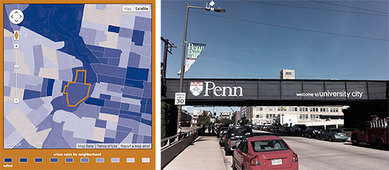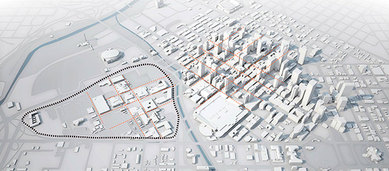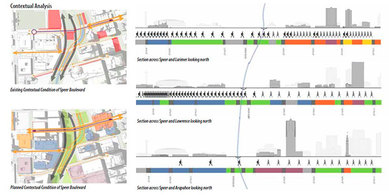UniverCITY 1: A City within a City
“University” has its roots in the Latin word “universitas,” which means “the whole.” To some degree, universities do have the complete set of components needed for a semi‐independent community. Universities usually have distinctive residential, working, and recreational zones, and it also isn’t hard to find park-like greenspace on campus.
Because of the “wholeness” of these university functions, the relationship between the city and the university becomes a very interesting topic. In many cases, universities are considerably independent from their host communities. Even for those in a denser urban environment, universities can still become “a city within a city.”
Universities usually generate distinct demographic, architectural, landscape, and transportation patterns. This phenomenon is most evident in larger metropolitan areas divided into well-defined and diverse neighborhoods. The more homogeneous nature of the academic environment often leads to an exclusive and self‐sustained community that screens off interactions and influences from its urban surroundings.
Denver’s Auraria Campus was laid out for the clustered development of three institutions, including University of Colorado Denver, Metropolitan State University of Denver, and Community College of Denver. Despite its direct proximity to the downtown, the district establishes a distinctive institutional experience with its standardized academic buildings, expansive recreational fields, and giant parking areas. The adjacent street grids also aren’t fully extended to the area, limiting the interactions between city and campus with physical and conceptual boundaries defined by major arterials and creeks.
Similarly, University City in Philadelphia also has clearly defined physical boundaries between its campus and the surrounding neighborhoods. Over time this has also been influenced by strong psychological barriers due to the fear of crime.
In some other cases, the boundaries between campus and city are blurred and the synergies between the two are more obvious. In many smaller college towns, where the dependency between the city and the university is more pronounced, the city and the campus tend to share similar characters and identities. But it also isn’t hard to find examples of campuses that are more assimilated into the urban fabric of larger cities.
Similar to many historic universities in Europe that have developed in concurrence with their communities, the University of Münster has scattered institutions all across the city. Many historic buildings in the old town became part of the university. For instance, the historic palace was used as the administrative center, and the university’s botanical garden is located right in the palace garden. Because Münster is the bicycle capital of Germany, different university departments can be reached through shaded municipal bike paths. In a departure from the traditional, independent campus model, the college life is seamlessly mingled with the vibrant city life.
So what role should the university play in the city? As planners and designers, how should we best define the relationship between the two? Should a university be experienced as an independent community with a unique identity, as a city within a city, or as a borderless campus fused into its urban context? Stay tuned for UniverCITY 2.


